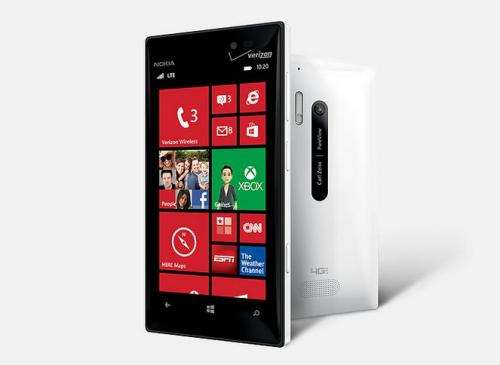Review: Nokia's new Lumia 920 little changed from predecessor

Nokia has a new flagship smartphone. You'll be forgiven if you can't distinguish it from the company's last top-of-the-line model.
The Lumia 928 replaces the Lumia 920 as Nokia's high-end smartphone. Although the Lumia 928 hit store shelves about six months after its predecessor, it's little changed. The devices share the same processor, have the same amount of storage space, the same basic camera and the same size display. And they run the same version of Windows Phone, which is starting to feel dated and under-featured.
The differences between the two devices are subtle. The Lumia 928 is thinner and lighter than the 920. Its xenon flash is more powerful than the 920's dual-LED one. It sports an OLED display compared with the 920's LCD one. And it's the first of Nokia's top-end phones to be available on Verizon.
Unfortunately, those changes aren't really enough to make the Lumia 928 stand out.
It may be thinner than its predecessor, but compared with Samsung's Galaxy S4 and Apple's iPhone 5, the new phone still feels heavy and thick. And while its OLED screen is vibrant and beautiful, it's smaller and of lower resolution than the OLED display on the Galaxy S4.
Where Nokia has tried to distinguish the Lumia 928 is with its camera. In addition to the xenon flash, it has an image sensor designed to allow users to take better photos in low-light situations.
Compared with my iPhone 5, it does better in dim lighting and with items that are in the shadows in brightly lit scenes. When I took a picture of my backyard in bright midday light, I could discern details of the shadowed bushes, grass and fence posts in the images made on the Lumia 928. Those features were much less visible on the images made on my iPhone.
But even the Lumia's camera system left something to be desired. Pictures taken by my iPhone were often sharper and of truer color than those taken by the Lumia.
Nokia offers a selection of built-in camera settings that allow users to take customized photos. Like the Galaxy S4, there's a best-shot feature that will take five pictures in a row, allowing users to mix and match the best scene and facial expressions. It also has a panoramic photo feature, although I found this to be much clumsier and more difficult to use than similar features on other smartphones.
Instead of taking a panoramic image with one continuous shot, you take one photograph, then move the phone to the next position as directed by the feature, where it will take the next picture and repeat the process. Unfortunately, lining up the phone with where the next shot is supposed to be taken can prove taxing. If you move too quickly to that spot or if that spot is in a particularly bright area, you can upset the process and have to either start over or attempt to move back to the spot of your previous shot.
In addition to the standard Windows Phone applications, Nokia has given the Lumia 928 phone some of its own mapping applications. Users can get driving directions with Nokia Drive. They can look up a local coffee shop or the nearest Fry's using Here Maps.
Here Maps includes a cool feature called LiveSight that helps users find nearby restaurants, stores and attractions. It's basically an augmented reality feature. When you point your phone in a particular direction, it will turn on the camera, so you see what's in front of you. Superimposed on that image are icons of local establishments showing their distance from you. As you turn in a circle, the icons change, reflecting what businesses are in particular directions. LiveSight won't be of much use if you're driving in the car, but it could come in handy on walking tours of cities.
The Lumia 928 has other things to like. It's relatively inexpensive, for example - $50 with a two-year Verizon contract, which is much less than you'd pay for a Galaxy S4 or an iPhone.
And it gives Windows Phone fans on Verizon another choice in devices, something they've sorely missed.
But as the new standard-bearer for Windows Phone and Nokia, the Lumia 928 is a disappointment. Nokia needs to set a higher bar for its next flagship device.
—-
NOKIA LUMIA 928
-Likes: Inexpensive; Windows Phone software accessible, easy to use; camera does well in low-light situations; cool augmented-reality LiveSight feature points to nearby businesses
-Dislikes: Relatively heavy and thick; features and specifications little different from predecessor and fail to set it apart from rivals; Windows Phone software in need of an update; pictures less sharp or true in color than those shot with iPhone; relatively few applications compared with iPhone or Android devices
-Specs: 1.5 GHz dual-core processor; 8.7 megapixel camera with xenon flash; 4.5-inch OLED display; 32 gigabytes of storage
-Price: $50 with two-year contract
-On the Web: www.nokia.com, www.vzw.com
©2013 San Jose Mercury News (San Jose, Calif.)
Distributed by MCT Information Services




















